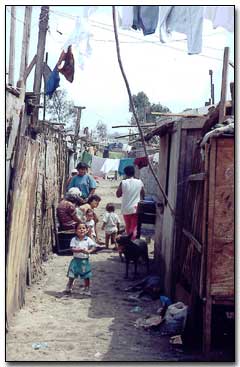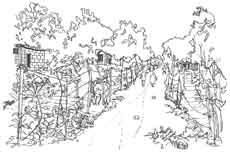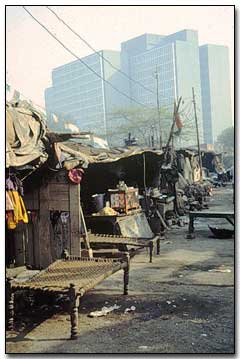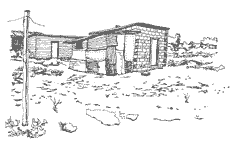|

|
 |
 |
 |
Identification of Program
|
|
|
What do you need to do?
• Act as catalyst in identifying and mobilizing resources for potential program.
• Identify and develop interest among potential stakeholders.
• Identify parameters of program.
|

Lima, Peru. |
The proposed effort should have the potential to assist a country and a city and a community in improving the lives of its population. A general framework for assessing if the intervention meets is as follows:
• it should fit into national development strategies.
• it should be appropriate to economic and social sector efforts.
• it should incorporate the views of the various stakeholders: the community, the city and national authorities.
• it should build upon the existing experience.
|
Key Goal
Key principles must be borne in mind during the initial stages: a sound project idea should address a key development need and must be 'owned' by the stakeholders.
Time to do
There is no set time for this phase. A long-simmering project idea may suddenly go forward once the situation is favorable.
|
|
|
Phase I: Getting Started
Checklist
|
You can view the topics by clicking on the red buttons  in the index below. |
Issues
|
Context
|
 |
What is the underlying perception of the housing situation: crisis? shortage?
|
 |
How does the project fit into the broader development context?
|
 |
How does the area fit into the urban structure?
|
 |
Is the area a good candidate for upgrading?
|
 |
What are the boundaries to the project?
|
 |
What are the underlying interests of the stakeholders?
|
 |
At What Stage and Level Should Participation Occur?
|
 |
Is the level of intervention appropriate: catalyst to get things started or more intense supporting/implementing efforts?
|
Definition
|
 |
What type of project is appropriate: upgrade in place, clear and redevelop, clear and relocate?
|
 |
What will be the Scope and Objectives: Project or Program? Basic services, economic development, social, education and health improvement?
|
 |
What about Preventive measures?
|
 |
How does it consider scaling-up?
|
 |
How to relate user demands and services?
|
 |
How to deal with historical context?
|
|
Tools
|
|
|
 |
Selecting Type of Project
|
 |
Selecting Target Areas
|
 |
Identifying Stakeholders
|
 |
Positioning Issues: The Problem Tree
|
 |
Interactive Community Planning
|
 |
Participatory Rapid Appraisal (PRA)
|
 |
Tradeoffs: Bertaud Affordability Model
|
 |
Setting Priorities
|
 |
Rapid Reconnaisance/Assessment
|

|
|
Phase I: Getting Started
Determine Feasibility
|
| |
|
What do you need to do?
• Review how project/program fits with national and urban goals and priorities.
• Review available resources and costs.
• Assess institutions and staff capacity in implementing project.
• Review affordability of families.
|

New Delhi, India |
This phase is a reflection on what is proposed and to make a final check if it should go ahead as conceived.
Key Issue
Feasibility from whose perspective? From Cost? Health and welfare? Safety? Municipality? Communities? Families?
Who does this
A project advocate (agency or person) takes the lead, and involves all interested stakeholders. Of particular importance is to bring in potential funders and to secure their approval and support. This phase allows identification of needed skills, needed institutional development, and adjustment of laws and regulations (e.g. legalization of squatters) as prerequisite to detailed project design and implementation.
Time to do
This phase can be relatively rapid, and could be covered in a month, assuming issues are appropriately addressed and all interested stakeholders have been sufficiently briefed and participated in the identification before. Should controversial issues arise, or no agreement reached in certain aspects, this phase could become very drawn out. Moreover, it can lead to a stigma on the program which can compromise later planning. |
|
Phase I: Getting Started
Feasibility Checklist
|
 |
How does it fit into comprehensive development plans?
|
 |
How does it consider scaling-up?
|
 |
Does it address issue of sustainability?
|
 |
Is it sensitive to cultural factors?
|
 |
Do the institutional and staff capacity match the scope and scale of the project?
|
 |
Does the organizational structure include sufficient coordination and political support?
|
 |
Is it financially viable? Are there sufficient financial resources to carry-through the program?
|
 |
Is the scope/scale affordable to the families and has willingness-to-pay been assessed?
|
 |
Will laws and regulations need to be modified?
|
 |
What will be the tenure arrangements?
|
 |
Is the location appropriate to upgrade?
|
|
 |
 |
 |
|
|




